April 25th 🙂
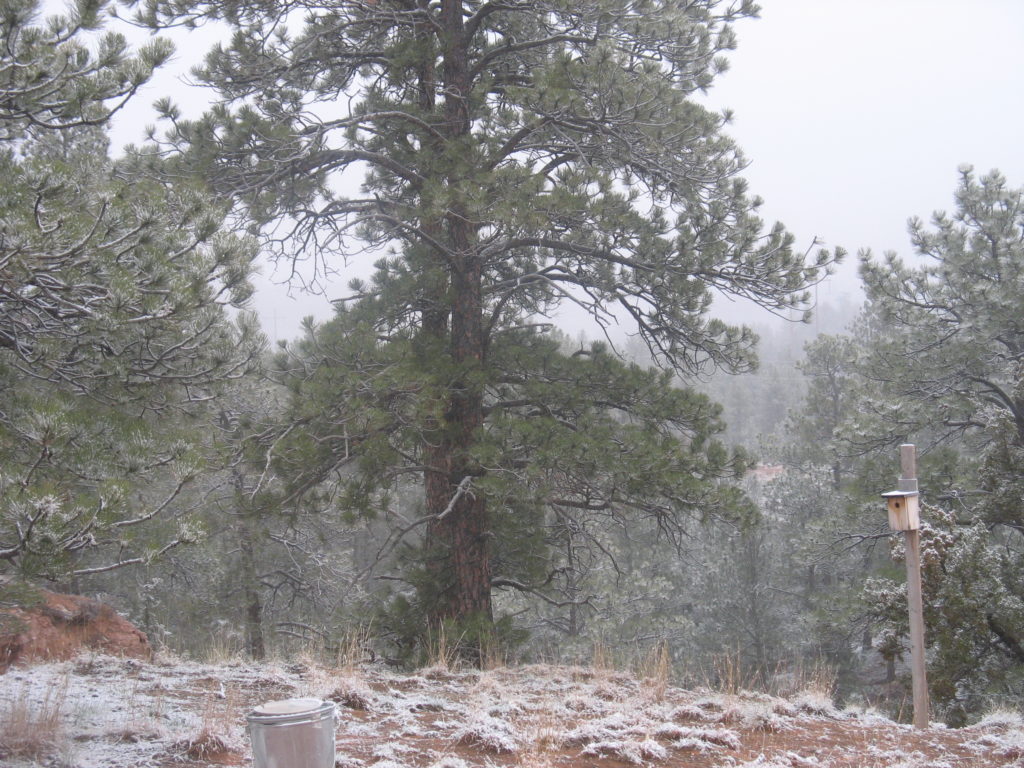
Sherlock and Watson watching the butterflies we hatched:
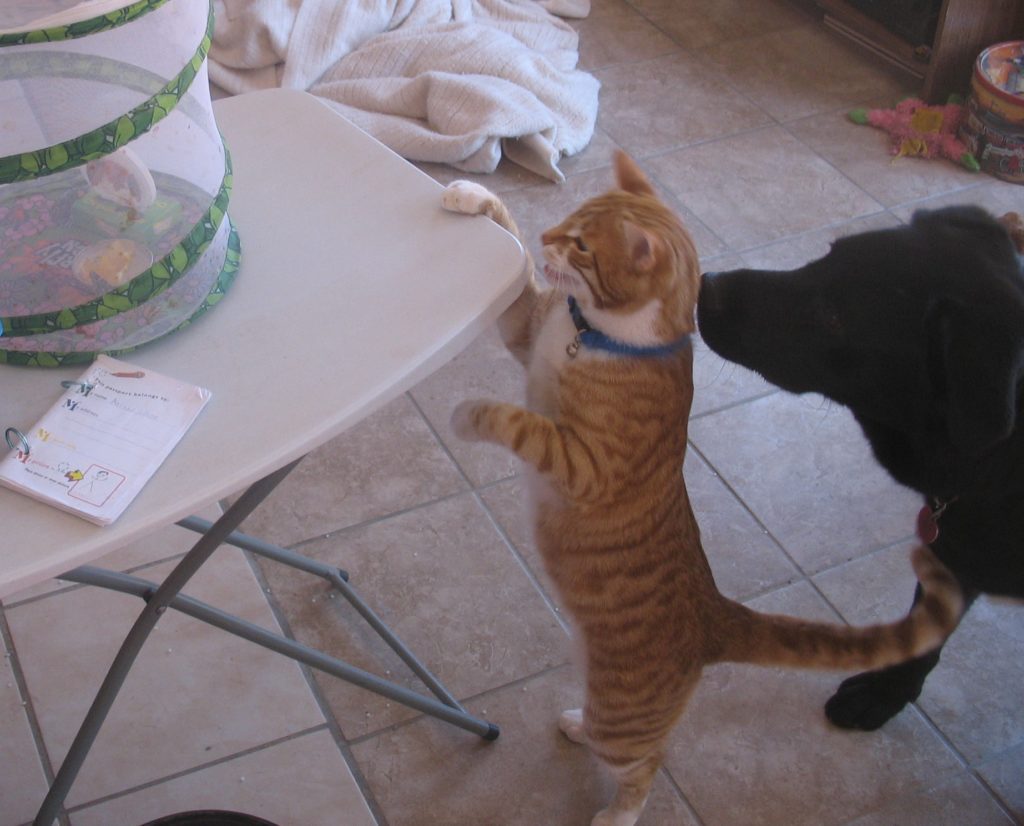
Teenage son made beautiful popovers:
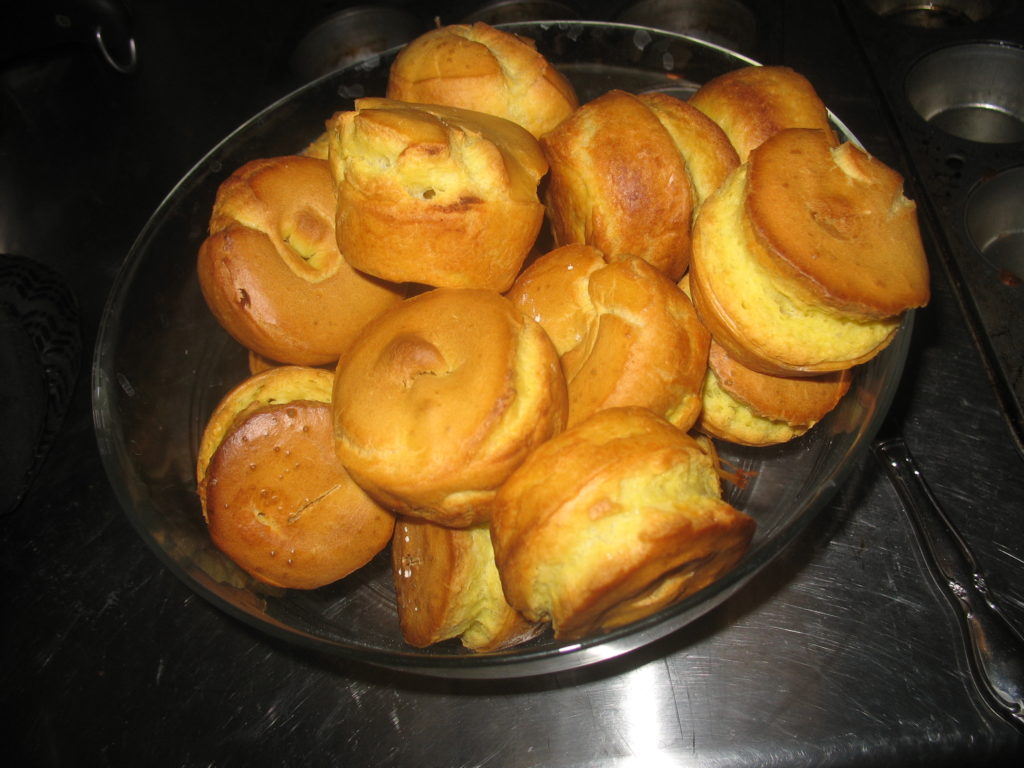
Son took this near where they get our water because he knew I would like it:

First produce from the garden, volunteer cilantro from last year:


April 25th 🙂

Sherlock and Watson watching the butterflies we hatched:

Teenage son made beautiful popovers:

Son took this near where they get our water because he knew I would like it:

First produce from the garden, volunteer cilantro from last year:


The car speeds down the highway, splashing a bit of water. I look out at the rain on the fields. Then I focus on the raindrops on the window, not sure why I am fascinated by the trails they make down the glass. We’ll see Mom & Dad soon; can’t wait to get back home to Missouri.
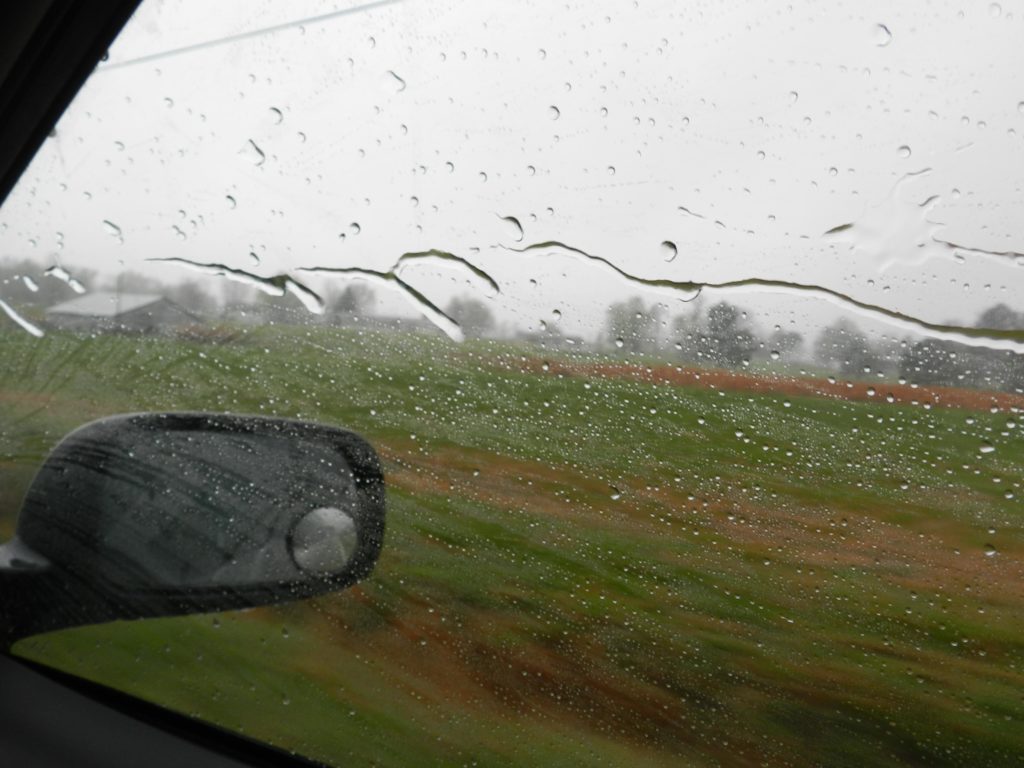
This time we are driving to a concert in the city. The rain makes everything shinier. The road glistens. The streetlights drip. The rain stops just before we step out onto the sidewalk to go into the concert hall. A car goes past, splashing a puddle. Even in the city, the rain smells good.
Now I am driving to the grocery store with the kids. I wish I didn’t have to deal with rain and groceries, yet it’s a pleasant rain which is washing the earth after a cold winter. After parking, I sit for a minute and watch the droplets on the windshield.
It’s been almost 9 years since I’ve been in a car in the rain, with one or two exceptions.
This is because when I go out, it’s usually to spend an afternoon at the park or somewhere outside.
The rare times I’m headed to the doctor or somewhere, there hasn’t been rain because we don’t get much rain here–only about 18 inches a year. 🙂
So, a very weird thing happens sometimes when I’m watching TV or internet.
When I see a car in the rain, memories of my “old life” coming flooding back, almost more than any other image.
Sometimes people on TV in grocery stores will do this, too. It’s been 7 years since I’ve been in a grocery store.
But the rain on a car window always makes me catch my breath. Something about the memories plus the unique feelings one gets about rain.
Dedicated to my fellow MCS sufferers who know what I mean.
Christa Upton Black Hills Picture Books Edgemont, SD 57735
This post is by my friends Ken & Deb from Canada. Deb has been diagnosed with CFS and is learning about mold avoidance. She is not sure if her current home is super moldy (from descriptions, I doubt it’s SUPER moldy), but she’s being proactive in this next move and unloading things she is concerned may have come in contact with mold from this home, or other homes that have been moldy in the past.
Deb writes–
————————
Pots & Pans & Such:
When reading The Mold Avoider’s Dilemma: What Should I Do About My Stuff? we noticed it was suggested that sometimes pots and pans can be salvaged from a moldy home.
We had determined to follow a very solid plan of action when transporting them from our current home, to the new home. We were waiting for the weather to warm up and then we had planned to take them to the backyard where we hubby would clean them up, and then pack them in a clean, metal garbage can until we unpacked them at the new home. He would take extra care to clean them using a toothbrush and good old castile soap: scrubbing, washing, and rising many times until we were confident that he had removed all the potential mold spores. There was just one problem. Our pots and pans had silicone handles.
We hemmed and hawed about just washing the silicone parts too, of course. We had decided we’d probably just put them into our rented storage unit where we could re-introduce them into our clean environment, slowly, to make sure I had no reactions. But, something about the silicone bothered us.
Google searches brought up nothing about silicone in relation to mold. It seemed to be in the category of hard plastic (any type of plastic makes me nervous) so we decided it was best to just remove the handles. Boy, oh boy, were WE in for a shock!
Out to the garage, gloved hands, with the skill of a surgeon (in fact double gloved with the wisdom of a proctologist 😉😉) hubby carefully cut through the silicon handle. Which by the way, was quite easy to do, the silicone let go with not much resistance.
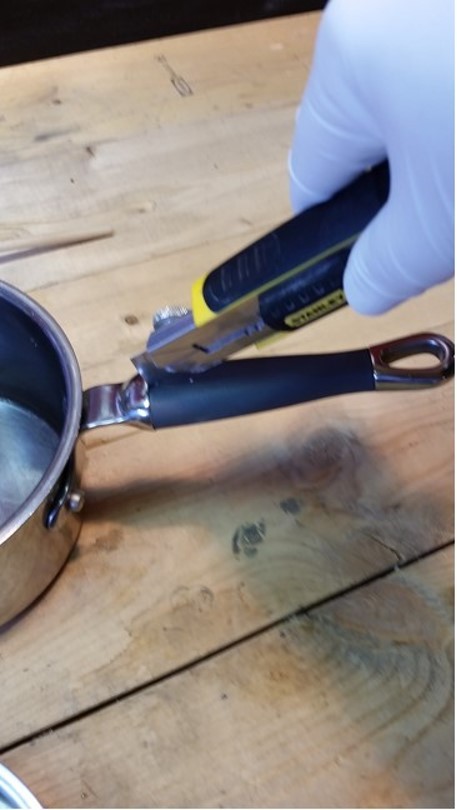
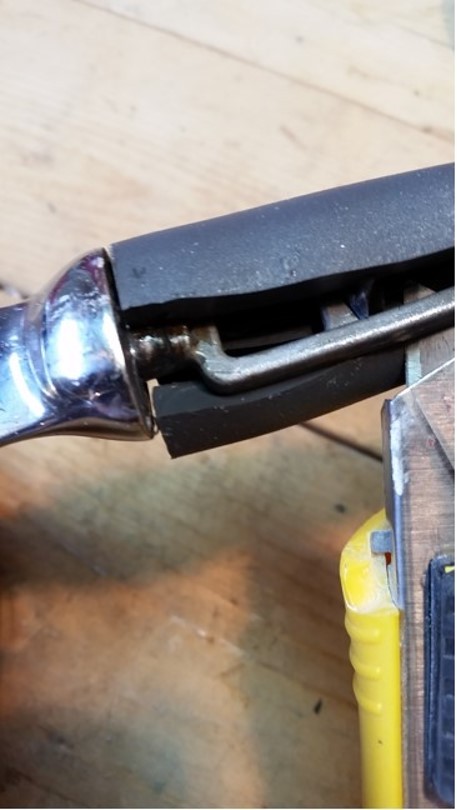
But what we found inside was nothing less than disgusting. It was wet, squishy and had some nasty black stuff inside. MOLD! I didn’t smell it. I wouldn’t go near it. But, I would imagine it probably reeked!
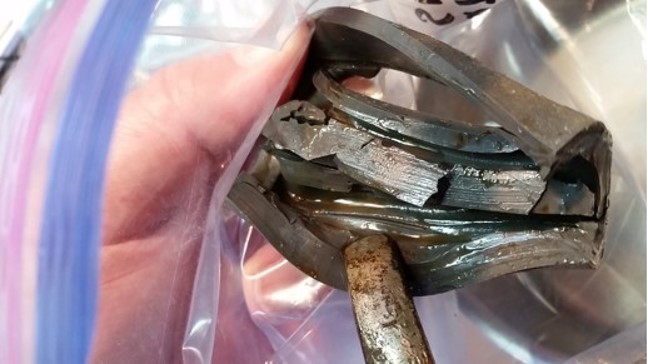
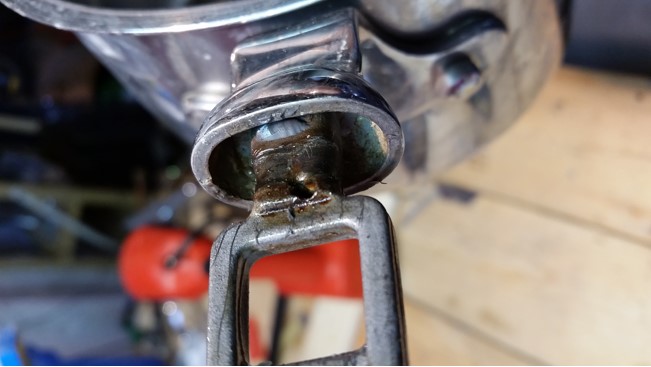
We would have never believed what had been living in those handles! And for how long!? But, looking back it just stands to reason. The gaps between the steel handle of the pot, and the added silicone handle, are tiny, but still penetrable. Constant washing (especially the dishwasher) where the hot water would have been expanding and letting in the water, and then contracting when it dried, must have been the perfect environment.
This is a picture of the cleaned up handle.
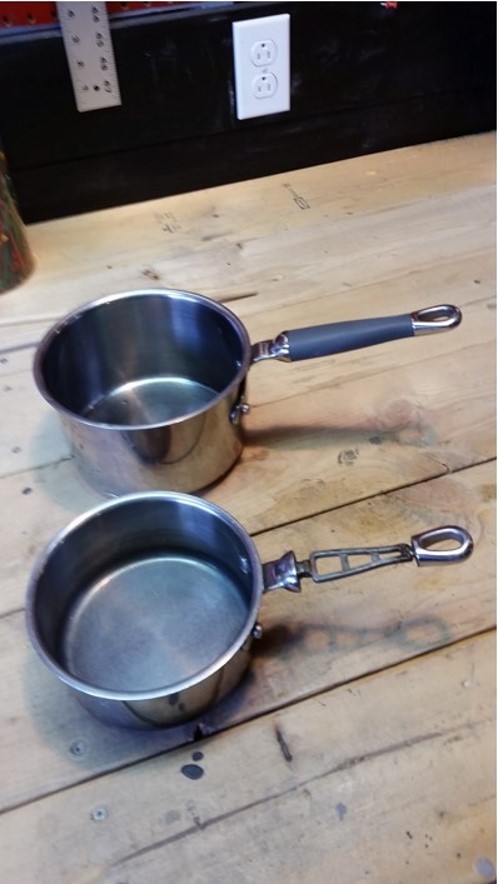
Suffice to say, we not salvaging the pots. We had thought of cleaning up said pots with the above protocol and purchasing separate silicone sleeves (say THAT 3 times real fast! Haha) to use in case the handles were too hot to hold, but frankly it just seems too risky. We may end up storing them and testing them at a future date when we are in a mold-free environment, but I don’t think I can ever feel good about these pots again, knowing what was in the them. This set is over 8 years old. Eight years is a long time to be accumulating mold. ☹ They should have come with a warning label!
Moral of the story? Never buy anything with a silicone handle! Especially, if it comes into contact with water!
Here are some possibilities of other items that could have a silicone/plastic handles or parts. Spatulas, the rubber in a Magic Bullet/blender (not saying these can be salvaged anyway because of the motor issue, but any new appliance with silicone/plastic parts must be regularly cleaned!), hair brushes, garden hand tools. Many kitchen utensils. Look around the kitchen!
As a caution, if you do attempt to remove the handles from your own pots and pans, please get someone who is not reactive to mold to do it. Do NOT do this yourself!
Thank you for sharing, Deb!! What an unexpected, hidden source of mold growth! Icky. Glad you found this out so others could be warned!
Christa Upton Black Hills Picture Books Edgemont, SD 57735
Note that my title says “safer,” not safe. This is because unfortunately, for some very sick people and/or for some very bad molds, no remediation is safe.
Some people report terrible reactions to their possessions they took from their moldy houses, even after they tried to clean the items. This is because mold in a building shoots out spores and toxins that land on everything. So some people cannot make even metal or glass items safe for themselves again. Most cannot make porous items safe again.
Now imagine all the places where mold spores and toxins could be lurking besides items: walls, floors, windows, ceilings, cupboards.
However, cleaning may help—hard scrubbing of surfaces. Painting over WILL NOT stop or even reduce risks from active mold, but if ALL mold has been removed, it’s possible painting may trap non-viable spores and toxins which had landed there. However, I do not know for sure about this—it has not been tested.
So, to remediation.
First of all, the reason for the mold must be found, whether a leak, humidity, or what. Otherwise, the mold will come back. The problem must be corrected.
Now, picture asbestos. Bad stuff. Hazmat practices needed.
Now pretend asbestos not only grows and spreads but also puts down roots INTO wood, drywall, insulation, and the like. And It doesn’t just sit there being poisonous, it actually SHOOTS OUT toxins in the air, even if it is “killed.” see Why is it Bad to Kill Mold?
Now you probably have a pretty good picture of what should be done. But I’ll lay it out as best as I can.
Even though this remediation can still fail for a person who got sick in that environment, it may do well for “most” people. It’s the safest way to do remediation besides burning the house down, removing even the dirt the house was on, and starting over. But for “average” people, it may even be better than the unfortunately many actively moldy houses in the world.
Christa Upton Black Hills Picture Books Edgemont, SD 57735
5/1/2017 update, adding ideas from people in the Mold Avoiders group. 🙂
I wrote this from the perspective of trying to find a new rental or house to purchase. But these might help find hidden mold in a current residence, too.
Also thanks to my friend D. P. for helping me brainstorm and come up with these.
Besides normal things one would look for (roof damage, signs of water damage on drywall, musty smell, etc.), here are some things to check:
Maybe the two most important ones??? These mean a very serious, continuing problem.
But also, old, dry mold can be a problem. 🙁
Christa Upton Black Hills Picture Books Edgemont, SD 57735
Last month I broke my wrist, which has meant three doctor appointments so far. (It’s healing great, though! Not any slower than normal! 🙂 )
But the normal scents and unavoidable chemical cleaners/disinfectants at the hospital were really tough to get out of my hair.
So I decided to try a wrap after a friend suggested it. I found a wonderful video and showed it to Steve so he could help me until my wrist is better. For some reason, I can’t get the video to embed here, but there are many videos you can find on YouTube on head wraps that are very helpful.
Here’s how mine turned out: 🙂

It really helped!! As soon as I got to the car after the hospital visit, it took it off (along with other outer layers of clothing with clothing underneath still not too contaminated). Then of course bath at home. I keep forgetting that you can also blow-dry (outside!) your dry hair even before washing, and that helps. too.
And I thought this looked much nicer than the time I tried an appointment with a towel on my head. LOL
I cannot tolerate any masks (long story), but I can help protect my hair; hair is so absorbent of vocs.
When I get better and can go out more & more, I am thinking I will probably do this type of head wrap all the time. It would be fun to try different colors and styles and techniques.
Christa Upton Black Hills Picture Books Edgemont, SD 57735
Starting TOMORROW (4-18-17), my digital mystery book for kids is FREE! ![]()
Free promotion goes through Saturday (4-22-17).
Can be read on any device including laptops (just need the free Kindle app.)
For ages 5 – 10, can be read aloud or read independently by older kids. Summer reading fun? ![]()
Includes comprehension & discussion questions.
The Disappearing Snacks (Mysteries with the Willow Street Kids, Book 2)
Christa Upton Black Hills Picture Books Edgemont, SD 57735
We’d been camping for two months for my health. Someone had given us an old RV (somewhat offgassed but not moldy! 🙂 ) in addition to my aluminum camper (which was not big enough for all five of us). All of our stuff (that didn’t fit in the RV) was in storage until we figured out where we would live after the RV.
With three young children and the youngest in a wheelchair, it wasn’t terribly easy. Multiple Chemical Sensitivity brings daily challenges no matter where you are living. Special needs are a constant no matter what else is happening. But we were trying to enjoy the adventure, make the best of the situation. But, we were weary.
One day we found the RV needed to have the brakes fixed. We’d have to take it to Rapid City (South Dakota). I couldn’t even go into the city limits without getting sick, so Steve set me up in my camper, in a quiet, hidden spot in National Forest that was open to camping. He arranged to have a friend bring me ice every day and be “on call” if I should need anything. I was pretty disabled at that time. He hitched the camper to the van should I have to drive out in an emergency like a forest fire. Then he and the kids headed up to the city.
Steve explained the situation to the RV repairmen, and they promised to get right on it so we could have our “house” back. 🙂 A relative graciously housed and fed Steve and the kids for the night and next day.
The next day around suppertime, Steve & the kids went to pick up the RV. Somehow a couple of the repairmen seemed to be acting funny, like schoolgirls with a secret, holding back smiles. Steve paid the bill and went to the RV and opened the door to help the kids inside.
There sat bags of groceries, canned goods, soda pop, napkins, and hot pizzas!!
This was 5 years ago, and it still touches my heart and brings tears to my eyes to think of it. How did those guys pull this off, and why did they go so out of their way to bless a little family? They might never know how much it meant to us, but I hope they did. A huge gesture of caring from strangers, a balm to our tired souls.
Christa Upton Black Hills Picture Books Edgemont, SD 57735
I’m honored to be on the Paradigm Change’s Living Clean blog today: http://paradigmchange.me/lc/upton/
Their website has tons of great information on mold & biotoxin illness.
Christa Upton Black Hills Picture Books Edgemont, South Dakota 57735
Here is the video of our mold-resistant, low-tox house. With great thankfulness to all who made this possible. Hope you enjoy! 🙂
https://www.youtube.com/watch?v=cRhksJI28Aw
Christa Upton Black Hills Picture Books Edgemont, SD 57735